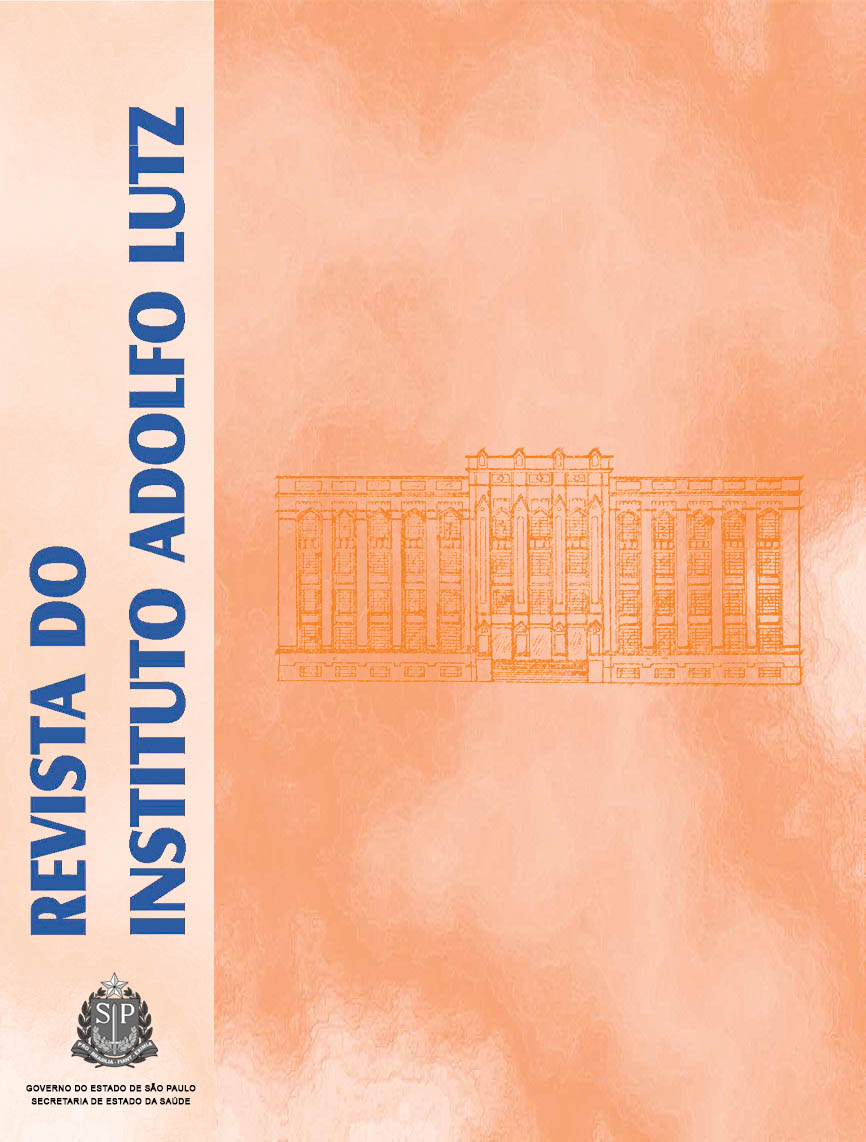Abstract
Many chemicals (alcohol, iodophor, chlorhexidine, etc) are used in laboratories and industries. Unlike disinfectants, no specific norms and criteria have been standardized for evaluating the antiseptics activity. This study analyzed the antimicrobial activity of antiseptics using Time Kill Test (Hobson & Bolsen). This assay assessed the evolution of a population of aerobic microorganisms in a specific period of time when tested against antimicrobial agents. Two different recovery methodologies were evaluated: membrane filtration and pour plate technique The membrane filtration assay was less sensitive. Pour plate technique showed high sensitivity with high colonies counts. Of 25 samples of products analyzed, only the chlorhexidine digluconate-based antiseptics were unsatisfactory, showing no efficacy on all reference micro-organisms strains, and corresponded to 20 % of analyzed samples. However, they were efficacious against clinical strains. Therefore, these products should be used with caution and further studies are needed, as data on its efficacy have still been scarce. These findings might give support to the health surveillance and public health in establishing the future legislation, as these products have been available on the market, but without following any specific legislation.References
1. Moriya T, Módena JLP. Assepsia e antissepsia: técnicas de esterilização. Medicina (Ribeirão Preto). 2008;41(3):265-73.
2. Santos AAM, Verotti MP, Sanmartin JA. Importância do álcool no controle de infecções em serviço de saúde. RAS. 2002;4(16): 7-14.
3. Hanberger H, Garcia-Rodriguez JA, Gobernado M, Goossens H, Nilsson LE, Struelens MJ. Antibiotic Susceptibility among
Aerobic Gram-negative Bacilli in intensive Care Units in 5 European Countries. J Amer Med Assoc.1999;281(1):67-71.
4. Pellegrino FL, Teixeira LM, Carvalho MMG. Occurrence of a multidrug-resistant Pseudomonas aeruginosa clone in different hospitals in Rio de Janeiro, Brazil. J Clin Microbiol. 2002; 40(7): 2420-4.
5. Pires, EJVC. Análise epidemiológica de isolados clínicos de Pseudomonas aeruginosa provenientes de hospital universitário. Rev Bras Ter Intens. 2009;21(4):384-90.
6. Brasil. Lei nº 8.080, de 19 de Setembro de 1990. Dispõe sobre as condições para a promoção, proteção e recuperação da saúde, a organização e o funcionamento dos serviços correspondentes, e dá outras providências. Diário Oficial [da] República federativa do Brasil. Brasília, DF, 20 set 1990. Disponível em: http://portal.saude.gov.br/portal/arquivos/pdf/lei8080.pdf
7. Crabtree BF, Miller WL. Using Codes and Code Manuals: a Template Organizing Style of Interpretation. In: Doing qualitative research in primary care: multiple strategies. 2. ed. Newbury Park, CA: Sage Publications; 1999. p.163-177.
8. Koneman EW, Allen SD, Janda WM.Diagnóstico Microbiológico: texto e atlas colorido. 6 ed., Rio de Janeiro: Medsi, 2001. p.87-90
9. Weber DJ, Rutala WA. Use of germicides in the home and the healthcare setting: is there a relationship between germicide and antibiotic resistence? Infect Control Hosp Epidemiol. 2006; 27(10): 1107-19.
10. Teixeira P, Valle S. Biossegurança: uma abordagem multidisciplinar. Rio de Janeiro: Ed. Fiocruz, 1996.
11. Food And Drug Administration – FDA. Tentative final monograph for health-care antiseptic drug products: proposed rule. Federal Register, 1994. p.31402-31452.
12. Souza ELC. Comparação do dogluconato de clorexidina 0,12% com e sem xylitol para controle do biofilme oral e efeitos adversos associados. [dissertação de mestrado]. Rio de Janeiro, RJ: Universidade Veiga de Almeida; 2007.
13. Murray PR, Rosenthal KS, Kobayashi GS, Pfaller MA. Manual of clinical microbiology. 9. ed. Washington D.C.: American Society of Microbiology, 2007. p.1183-1185.
14. Brasil. Ministério da Saúde. Resolução RDC nº 42, de 25 de outubro de 2010. Dispõe sobre a obrigatoriedade de disponibilização de preparação alcoólica para fricção antisséptica das mãos, pelos serviços de saúde do País, e dá outras providências. Diário Oficial [da] República federativa do Brasil. Brasília, DF, 26 out 2010. Disponível em: http://bvsms.saude.gov.br/bvs/saudelegis/anvisa/2010/res0042_25_10_2010.html
15. Tortora GJ, Funke BR., Case CL. Microbiologia. 7 ed. Porto Alegre: Artmed, 2002.
16. Roessler WG.Methods of Testing Antiseptics. In: Block SS. Desinfecção, Esterilização e Preservação. 3 ed. Philadelphya: Lea & Febiger, 1983. p.100-106.
17. European Standard, EN1040: Chemical disinfectants and antiseptics – Quantitative suspension test for the evaluation of basic bactericidal activity of chemical disinfectants – Test method and requirements, 2005.
18. Austrian Standards Institute. EN 14885: Chemical disinfectants and antiseptics: application of European Standards for chemical disinfectants and antiseptics. Wien; 2007.
19. Hobson DW, Bolsen K. Methods of testing oral and topical antiseptics and antimicrobials. In: Block SS. Disinfection, Sterilization, and Preservation. 5. ed. Philadelphia, Pa: Lippincatt Williams and Wilkins; 2001. p.1329-1358.
20. AFNOR. Normes & Réglementation: Antiseptiques et Disinfectants. Paris: AFNOR, 1998.
21. Brasil. Portaria nº 2616, de 12 de maio de 1998. Controle de infecção hospitalar. Diário Oficial [da] República Federativa do Brasil. Brasília, DF 13 mai 1998. Disponível em: [http://portal.anvisa.gov.br/wps/wcm/connect/8c6cac8047457a6886d6d63fbc4c6735/PORTARIA+N%C2%B0+2.616,+DE+12+DE+MAIO+DE+1998.pdf ?MOD=AJPERES].
22. Reis LM, Rabello BR., Ross C, Santos LMR. Avaliação da atividade antimicrobiana de antissépticos e desinfetantes utilizados em serviço de saúde. Rev Bras Enferm. 2011; 64(5): 870-5.
23. Atayese AO, Effedua HI, Oritogun KI, Kareem KT, Oluwadun A. Comparative study of the antimicrobial activity of chlorinated and non-chlorinated antiseptics against C. albicans. Acad Arena. 2010;2(9):35-40.
24. Foster JSH. Preservation of ophythalmic solutions. Manufact Chem Aerosol News. 1965;2:43-6.
25. Balows A, Hausler, William J.Manual of clinical microbiology. 5.ed. Washington, D.C: American Society of Microbiology, 1991.

This work is licensed under a Creative Commons Attribution 4.0 International License.
Copyright (c) 2013 Instituto Adolfo Lutz Journal
